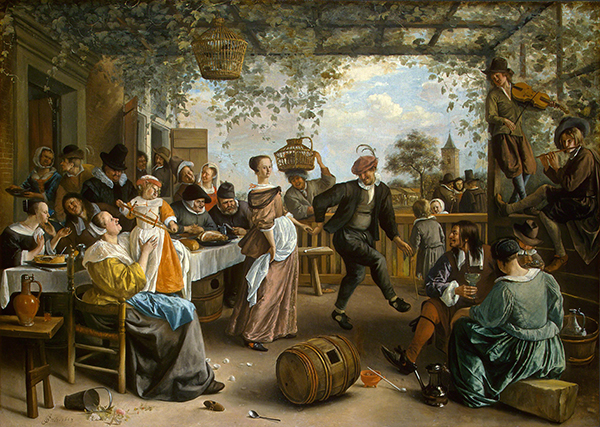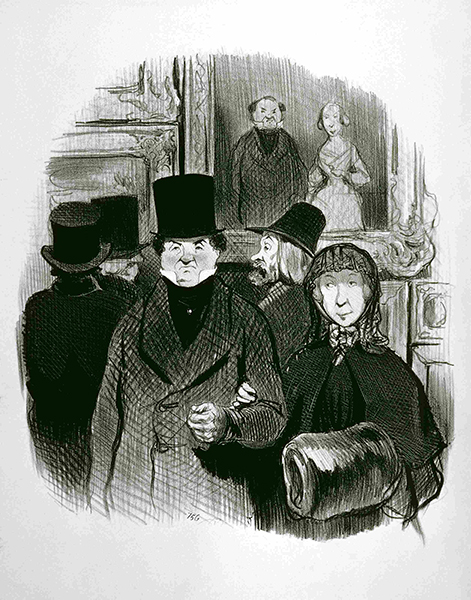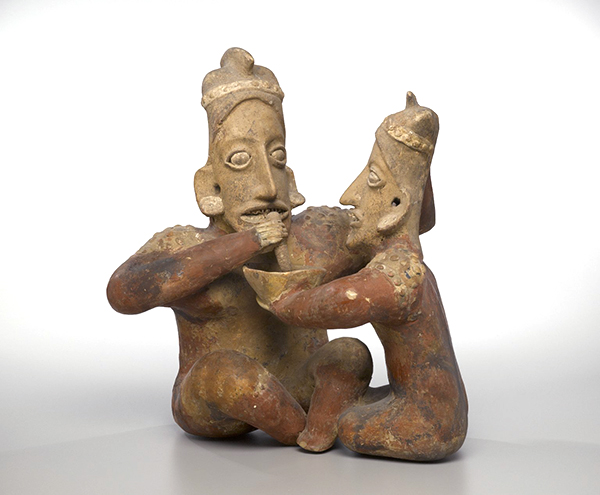Romance Awareness Month 2022
I happen to be a romantic slob at heart, and when the subject of “romance” comes up, works of art that I think characterize the concept naturally spring to mind. The following works may not be everyone’s idea of romance, but they do show unique interpretations of people together.
 |
| Jan Steen (1626–1679, Netherlands), The Dancing Couple, 1663. Oil on canvas, 40 3/8" x 56 1/8" (102.5 x 142.5 cm). © 2022 National Gallery of Art, Washington. (NGA-P0093) |
Jan Steen excelled in all characteristics of painting, like his Dutch Baroque peers: extreme contrast of light and dark, realistic depiction of physical objects, and unvarnished realism of human physiognomy. Contrast of dark and light was based on the work of Caravaggio (1571–1610), who influenced the Dutch and is known for spotlight-like lighting, called tenebrism.
The fluid relationships of the figures and richness and breadth of characterization in The Dancing Couple are typical of Steen's genre scenes. Steen was especially known for his depictions of children. He was also one of the most sophisticated colorists of his period.
Despite the joyous nature of this painting, where the object of the male dancer’s affections seems a little shy, Steen usually had emblematic messages (symbols) that alluded to Netherlandish proverbs or religious moral invectives. Prominent in the foreground of this painting are spilled cut flowers and broken eggshells, symbols for the transience of earthly life and the loss of innocence. To show that he equates himself with this human message, he placed a self-portrait in the form of the man cupping the drinking woman's chin on the left.
The rowdy genre scenes of Steen usually give the mistaken impression of mitmachen, “living the same,” because he owned a tavern. However, Steen was a Catholic in a reformed country and many of his genre scenes contain moralistic symbolism. Hidden symbolism was a feature of many Northern Renaissance religious paintings, cloaking symbols in everyday objects.
Dutch art of the Baroque period maintained the same ideals of naturalism and detail as Northern Renaissance painting. However, in contrast to Catholic countries, Dutch artists developed their own hierarchy of subjects and styles, reflecting their reformed religion and the absence of a dominating church. While some religious subjects persisted, portraiture, genre scenes, landscape, and still life became the predominant arena of Dutch painting.
Calvinistic Protestantism (the most reactionary of the early movements of the Reformation) frowned on any classical, historical, or religious subjects in art, which ended up turning focus on the predominant, prosperous middle-class culture. Northern Renaissance painters clothed religious subjects in contemporary Netherlandish middle class life, so aspects of everyday life (genre) had appeared in northern painting during the 1400s as peripheral imagery. By the third decade of the 1500s, scenes of everyday life, particularly after the Protestant Reformation (starting in 1517), had evolved into stand-alone subject matter, sometimes with moralistic overtones.
Steen was born in Leiden and is thought to have studied with the history painter Nicilaus Knüpfer (1603–1655) in Utrecht and the genre scene and portrait painter Adriaen van Ostade (1610–1685) in Haarlem. He lived and died in Leiden, owning a tavern there, but also spent time in Haarlem and The Hague. Steen is most renowned for his paintings of humorous middle class genre scenes, but also painted historical, religious, and mythological scenes, as well as portraits and still life.
Unfortunately, the period of 1652–1678 (most of his adult career) was one of several ridiculous wars with England and later France for mastery of colonial trade shipping on the high seas. Thus, although he was successful, Steen never achieved a prosperity such as Rembrandt and Rubens had experienced.
 |
| Honoré Daumier (1808–1879, France), When One’s Portrait Is at the Salon, #59 from the series The Beautiful Days of Life, published April 26, 1845, in Le Charivari illustrated newspaper. Lithograph on paper, 14 3/16" x 9 5/8" (36 x 24.5 cm). Cleveland Museum of Art, public domain. (8S-30155) |
Having grown up poor, Honoré Daumier rarely veiled his disdain for the comfortable and complacent French middle class. This section of society was perfectly satisfied with a corrupt and oppressive monarchy, imbalanced judicial system, and urban decay as long as it had no effect on the “perks" in their lives. This was the rising class of art patrons with unsophisticated tastes who went along with the dictatorial aesthetics of the official French Academy.
The French Academy sponsored a Salon every year in which paintings and sculpture appeared that were judged "good art" by the conservative academicians. In this print, Daumier pans the Academy's emphasis on history painting and portraiture as the most honored subjects in the hierarchy of painting. He drove the point home by depicting a homely, smug middle-class couple beaming that their portrait is displayed at eye level (á l'oeil), the most honored position an artist's work could attain in the annual salon. What better way to honor a couple’s bond than with a portrait displayed in public.
Neoclassicism and Romanticism—two prominent early 1800s styles in Europe—did not relate to everyday concerns with their emphasis on allegory, ancient history, and exotic drama. Although Romanticism took the step to represent current events with realistic emotion, the blossoming movement of Realism in the 1830s through 1850s strove to depict everyday life without theatricality and with an emphasis on observed facts of everyday life, no matter how brutal, which—to some critics—often bordered on the vulgar. The artists who called themselves Realists were the first artists in history to consider themselves “avant-garde.”
While Daumier's radical politics and anti-monarchist views definitely imbued his art with a quality that was intended to invoke sympathy for the poor (Romanticism), his work depicted the plights of the downtrodden of Paris with such stark realism that it transcended the exotic and idyllic sparks of Romanticism. While his paintings and prints have a subjective point of view, they are scenes of common people in everyday, often squalid conditions.
Daumier certainly understood being poor as the son of a glass artist and aspiring but failed poet who was put out of work by the Industrial Revolution. His family moved to Paris when he was 8, and by 12 he was forced to help the family earn a living, working in a bailiff's office as a clerk. Here he got acquainted with the legal profession and the plight of poor people, which became a driving force in his art the rest of his life.
At 16, Daumier studied under the aesthetician and student of Jacques-Louis David (1748–1825), Alexandre Lenoir (1761–1839), who got Daumier acquainted with the paintings of Rubens (1577–1640) and Titian (died 1576), and classical sculpture. He took formal artistic training at the Swiss Academy in Paris, getting his earliest jobs learning the new medium of lithography for a publisher named Belliard. At 21, he published his first lithographs in the magazine La Silhouette.
After the revolution of 1830, Daumier began producing satirical political cartoons for the anti-monarchist magazine La Caricature. After that he produced lithographs for Le Charivari, the first daily newspaper illustrated with lithographs. Daumier is best-known for his satirical lithographs.
Daumier produced almost 4000 prints in his lifetime. He also supplemented his income with painting. While he did some portraits and genre scenes, many of his paintings concern the same subjects as his prints—the lives of the poor, struggling underclass, and the denizens of the spoiled middle-class.
 |
| Jalisco Culture, Ameca Valley(?), ancient Mexico, Seated Couple, ca. 100 BCE–300 CE. Unglazed ceramic, 17 ½" x 15 ¼" x 10" (44.5 x 38.7 x 25.4 cm). © 2022 Brooklyn Museum. (BMA-3410) |


Comments